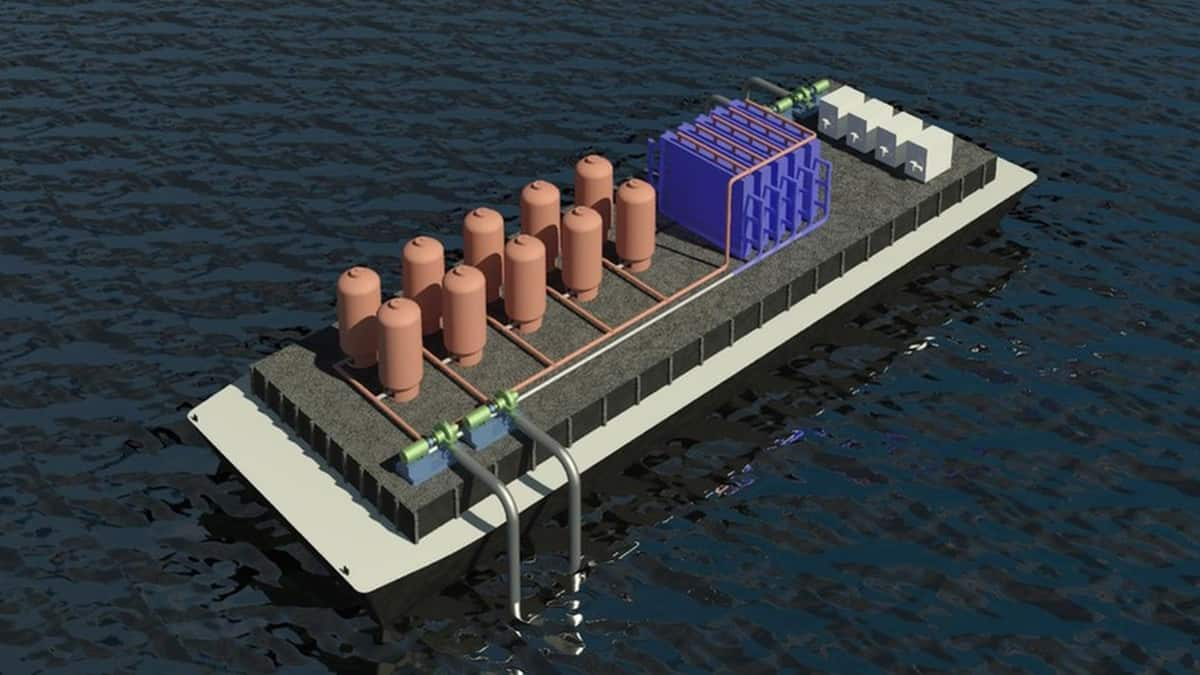Removing carbon dioxide from the atmosphere is an innovative method, and some agencies have studied the possibility. Now, a team from the Massachusetts Institute of Technology has devised another process for extracting carbon dioxide from seawater.
The ocean absorbs 30 to 40% of all gas produced by human activities. In addition to projects we are already aware of to extract carbon dioxide from the atmosphere, these percentages have led to consideration of direct seawater removal as an alternative to mitigating carbon dioxide emissions.
Current methods for extracting carbon dioxide from seawater use effort across a stack of membranes to acidify the feed stream, which converts bicarbonate in the water into carbon dioxide molecules, which can then be removed under vacuum. However, these membranes are expensive, in addition to the need for chemicals to carry out the process.
Removing carbon dioxide from the sea can be more efficient than removing it from the air
Faced with this problem, a team from MIT (Massachusetts Institute of Technology) developed A process involving electrochemical cells without a membrane. That is, reactive electrodes are used to release protons into seawater, which causes dissolved carbon dioxide to be released from the water.
This process is cyclic: it first acidifies the water to convert dissolved inorganic bicarbonate into molecular carbon dioxide, which is collected as a gas under vacuum. The water is then fed to a second set of cells with a reverse voltage to recover the protons and turn the acidic water back into alkaline before releasing it back into the sea. Periodically, the roles of the two cells are reversed when one set of electrodes is depleted of protons (during acidification) and the other is replenished during alkalinization.
Removing carbon dioxide and slowly reinjecting alkaline waters can begin, at least locally, to reverse ocean acidification caused by carbon dioxide buildup, which in turn threatens coral reefs and shellfish.
to explain Kripa Varanasia professor of mechanical engineering, admits knowing they wouldn't be able to "tackle the entire planet's emissions."
Kripa Varanasi, Professor of Mechanical Engineering
As T. Alan Hatton shared, "The process can be more efficient than air capture systems, because the concentration of carbon dioxide in seawater is 100 times greater than in air."
Research will continue to find alternatives to existing problems, such as the need for a vacuum to remove carbon dioxide from water.
The carbon dioxide problem is the crucial problem in our life and our existence. So obviously we need all the help we can get.
Varanasi is guaranteed.
Well, T. Alan Hatton, one of the researchers involved in the seawater carbon dioxide removal system
The MIT team hopes to have the system ready for a working demonstration project in about two years.
Learn more about the system here.

“Hardcore alcohol maven. Hipster-friendly analyst. Introvert. Devoted social media advocate.”

